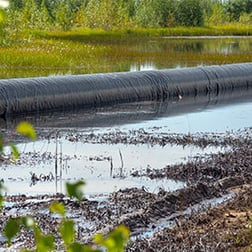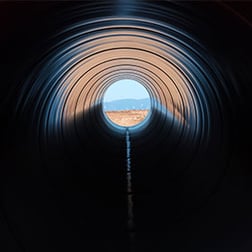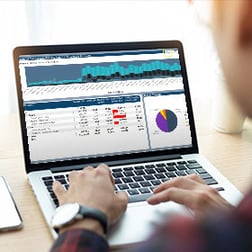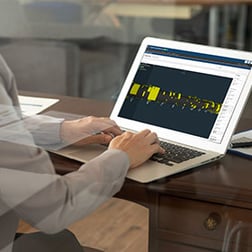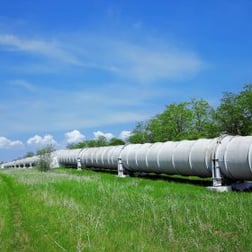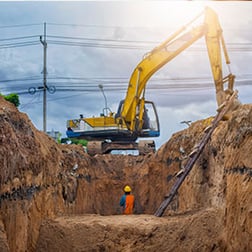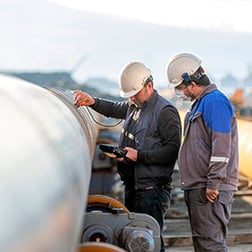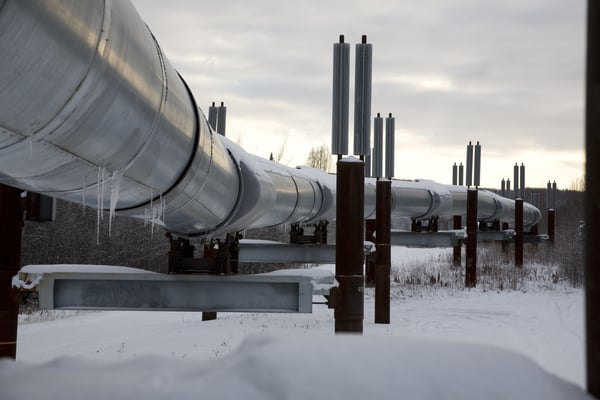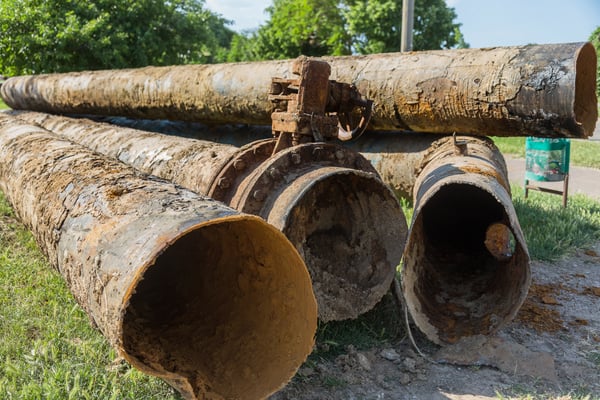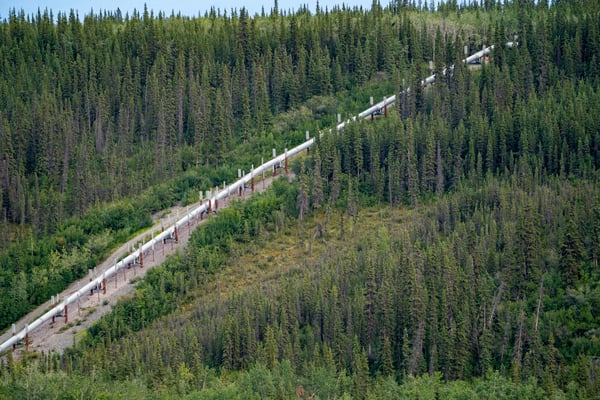One Bridge Solutions
OneBridge Solutions Puts Innovation in the Pipeline
Do you live within 200 yards of an oil or gas pipe? More than 60% of Americans do, but no one – not public agencies, not commercial customers, and not even the energy companies that own the pipes – could tell you exactly where defects in those pipes are. As that infrastructure ages far beyond its intended lifespan, the costs of maintaining and servicing pipelines pose a $68 billion headache for the industry and a ticking time bomb for the public.
Today’s technology for servicing those pipes is nearly as antiquated as the pipes themselves. Even when problems are discovered, the data, which today can only be analyzed at a rudimentary level, makes it nearly impossible to identify the precise location of the fault, leading to wasted labor, squandered resources and distrust.
Our OneBridge Solutions team, a Canadian-American startup headed by long time energy industry veteran Tim Edward and software expert Brandon Taylor, has a simple idea to dramatically reduce the cost and systemic risk of maintaining pipes and, eventually, any legacy infrastructure.
Our breakthrough? Where everyone else sees a maintenance problem, OneBridge sees a data problem.
Cleaner data, cleaner solution. “When companies send equipment down the pipe to look for faults, the data output from those systems is not easily decipherable,” says OneBridge President Tim Edward.
The process depends on a corps of veteran analysts who scan thousands of numbers in spreadsheets for clues of deterioration in pipes that may be decades beyond their intended service life. It’s detailed, labor intensive work that doesn’t appeal to Millennials, posing troubling succession issues for an industry that is already getting squeezed by an aging workforce. But the kind of learned intelligence necessary to make sense of poorly-structured data has been nearly impossible to automate, until now.
Our OneBridge team has developed proprietary algorithms to read, format and standardize the data, using advanced machine learning capabilities that replace countless hours of rote labor. The clean data can then be layered with other data from GIS, environmental, and mapping systems, and efficiently analyzed to pinpoint the exact locations of defects on the buried pipe.
It’s a targeted innovation that unlocks a storehouse of value.
Taking the guesswork out of maintenance. “In the past, the spreadsheet data would tell you which length of pipe had an issue, but not the exact location of the defect,” says Edward. Consequently, crews would dig up lengthy sections of pipe to find a particular crack or fault.
Instead of numbers in spreadsheets, companies have advanced visualization features to let field engineers view defect growth over time and even do predictive analysis of when that defect could become critical. In future, we plan to deliver exact location information to field crews using mobile devices and Microsoft HoloLens augmented reality.
Improving safety and compliance. “We see this as more than just a cost-saving solution for the industry,” says Brandon Taylor, OneBridge’s CTO and President of US operations. “Maintaining these pipes is also a public safety issue and a huge environmental issue. The complexity and high costs of complying with safety regulations are an enormous source of tension between industry and regulators”
Taylor says that having precise analytics from the data and instant access to this information by company personnel, local officials and emergency responders who may get called in to protect people, property and the environment should a pipeline failure occur will be a huge benefit.
“Whenever there’s a failure, the first questions always asked are “where is the pipe, what’s in it, who’s at risk, and what is the plan to mitigate disaster?’” says Edward. “Those used to be hard questions to answer in a timely manner, and inaccurate information can make a bad situation worse. Our solution instantly layers the information needed for a quick response plan and makes things a lot easier to manage. This can help protect property, save lives, and reduce liability.”
Vision through the cloud. Our breakthrough is made possible by the vast processing capabilities of Microsoft’s Machine Learning and Azure computing platform, which is being used to solve all kinds of high-level analytics and visualization problems for big data.
Taylor says the cloud-based architecture of the solution has additional benefits to customers. “Any company that wants to use our solution can get started with it on day one, without the need to invest in additional equipment in the data center.”
OneBridge utilizes an embedded version of Microsoft’s Power BI, the advanced data visualization reporting component of the Office 365 suite. Data visualizations can be exported into documents or used to create dashboards of information that are customizable for any person within an organization, and information updates real-time as events occur.
Pipes to the future. Maintaining physical infrastructure that was built decades ago is one of the key challenges of the 21st century. This applies not only to oil and gas pipelines, but also to roads, railways, water and sewage lines, building and public spaces.
“Our approach at OneBridge has the potential to save hundreds of billions in wasted costs, extend the life of all kinds of critical infrastructure systems, reduce risk to the public, and restore trust in the companies responsible for managing such infrastructure,” says Edward.
“It starts with pipes. But it doesn’t end there.”




